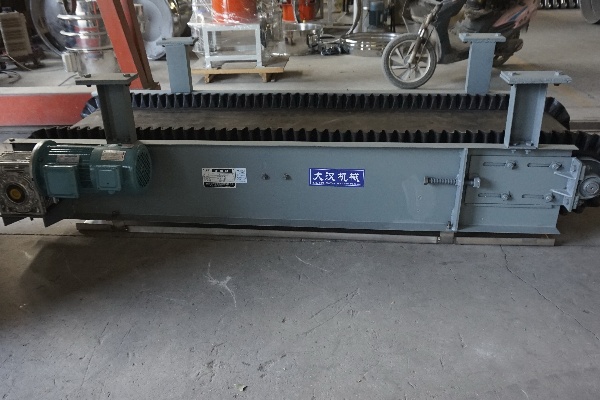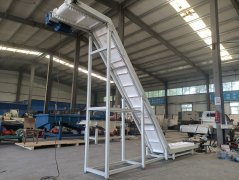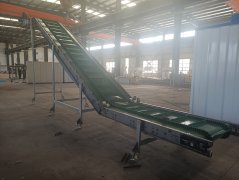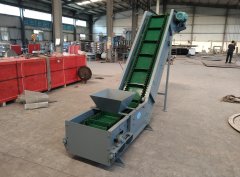PVC Belt Conveyor Manufacturers
Friday August-08 2025 16:19:02
pvc belt conveyor play a role in material transportation in industrial production. Different manufacturers offer a variety of specifications and models of PVC belt conveyors to suit different application requirements. The differences in these devices may be reflected in the material, thickness, wear resistance of the belt, as well as the design of the frame structure, drive mode and control system. When choosing the right equipment, it is necessary to understand the specific parameters and performance of each manufacturer's products, or communicate with the manufacturer to choose customized products.
What are the advantages of PVC belt conveyors?
PVC belt conveyors are favored in many industries because of their versatility. Here are some of the main advantages of PVC belt conveyors:
Good chemical resistance and corrosion resistance
PVC material has good resistance to a variety of chemicals, oils and greases, which makes it perform well in applications that require contact with these substances, is not susceptible to corrosion, and helps to extend its service life.
Easy to clean and maintain, meets hygiene requirements
PVC conveyor belts have a smooth surface, are not easy to accumulate dirt and bacteria, and are very easy to clean and maintain. This is essential for industries with strict requirements on hygiene standards.
Lightweight and easy to install
PVC belts are usually lighter than rubber belts and have a certain flexibility, which makes them easier and faster to install and replace, reducing downtime.
Abrasion resistance
Although not as wear-resistant as some special rubber conveyor belts, PVC conveyor belts have good wear resistance in normal light and medium-duty applications, and can withstand frequent use and certain wear and tear, ensuring a long service life.
Versatility and customization
PVC conveyor belts can be manufactured in various widths, lengths and configurations, and special features such as baffles, skirts and guide strips can be added according to specific needs to adapt to different conveying tasks.
What are the types of PVC belt conveyors?
The types of PVC belt conveyors are usually classified according to their structure, function, application scenarios and the special properties of the belts. Although the core is to use PVC belts, the specific designs will vary greatly to adapt to different needs.
Climbing belt conveyor: used to convey materials at a certain inclination angle, usually with baffles, skirts or anti-slip patterns (such as grass patterns, fishbone patterns, etc.) to prevent materials from sliding down. Widely used in scenarios where the height of materials needs to be raised, such as warehouse stacking, inter-floor transportation, etc.
Telescopic belt conveyor: The length of the conveyor can be freely extended and retracted as needed. It is often used for loading and unloading goods, such as truck loading and unloading, container loading and unloading, etc., which can significantly improve loading and unloading efficiency.
Belt conveyor with baffles/skirts: This is a type of belt with special accessories attached to the PVC belt. Baffles are used to prevent materials from sliding backwards during inclined conveying. Skirts are used to prevent materials from overflowing from both sides of the belt, especially when conveying bulk materials.
Anti-slip/patterned belt conveyor: Various patterns (such as grass patterns, diamond patterns, herringbone patterns, etc.) are pressed on the surface of the conveyor belt to increase friction. It is suitable for climbing conveying or occasions that require stronger grip.
Perforated belt conveyor: Holes are punched on the PVC belt to adsorb and fix materials (vacuum adsorption), or for special sorting, drying and other applications.
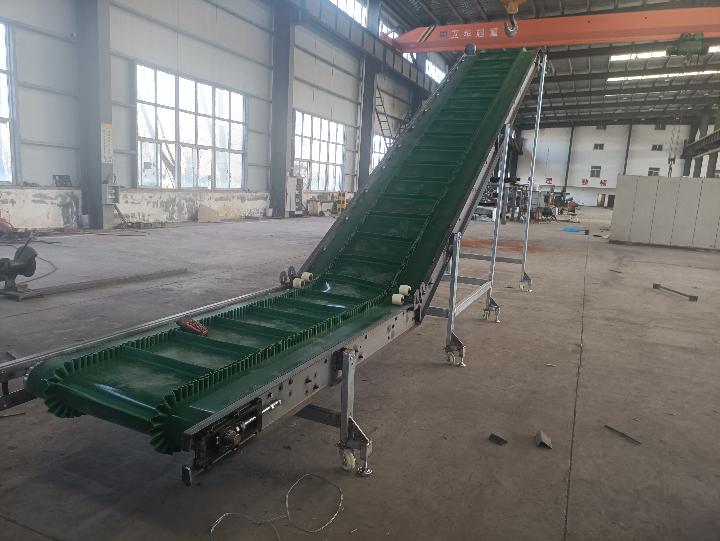
What are the applications of PVC belt conveyors?
PVC belt conveyor plays an important role in various light and medium-sized material conveying scenarios with its diverse advantages. The following are some of its main uses, not involving specific industries and fields:
Material handling and transportation: The basic use is to continuously and stably convey various light and medium-sized bulk or packaged materials. It can achieve smooth movement of materials from one point to another, whether it is horizontal, inclined or curved. This includes:
Horizontal conveying: moving materials over long or short distances at the same height.
Inclined conveying: lifting materials to a higher height or conveying them from a high place to a low place.
Curve conveying: achieving a smooth transition of materials when the conveying direction needs to be changed.
Sorting and classification
Combined with automated control systems, PVC belt conveyors can be used to automatically sort and classify materials. By setting sensors, scanners or diverters on the conveyor belt, materials can be directed to different exits or areas according to their properties (such as size, shape, barcode information, etc.).
Loading and unloading
Telescopic or fixed PVC belt conveyors are often used to load or unload materials in vehicles, containers or warehouses. They can significantly improve work efficiency and reduce the intensity and time of manual handling.
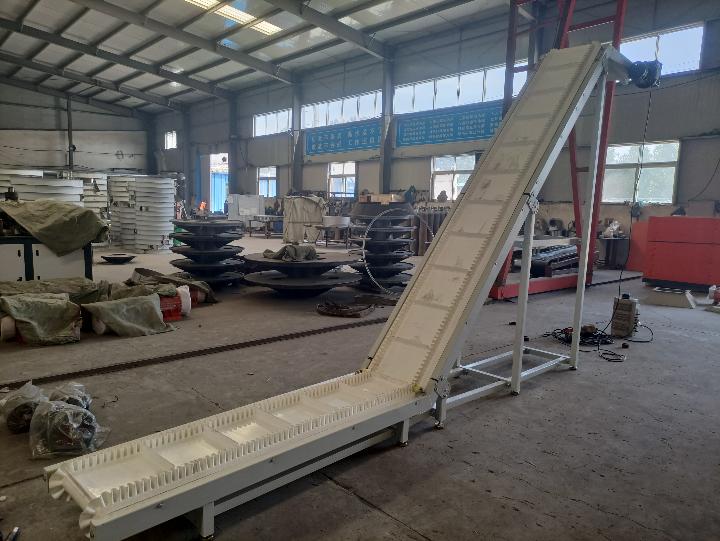
When choosing a PVC belt conveyor, it is necessary to carefully evaluate the actual conditions of products from different manufacturers. Manufacturers differ in the design, manufacture, and auxiliary functions of belt conveyors. For example, some manufacturers may focus on providing customized solutions, while others may provide a more standardized product line. Users should consider the load-bearing capacity, operating noise, and maintenance convenience of products from different manufacturers based on the physical properties of their own materials, conveying distance, conveying volume, and specific requirements for the equipment operating environment.
